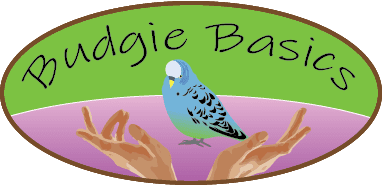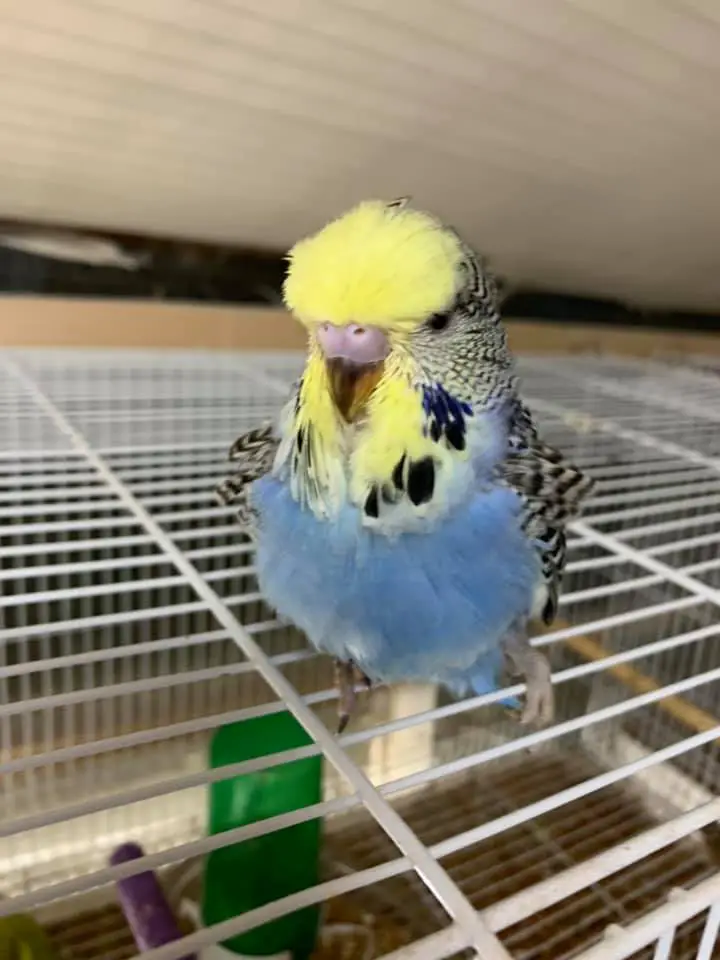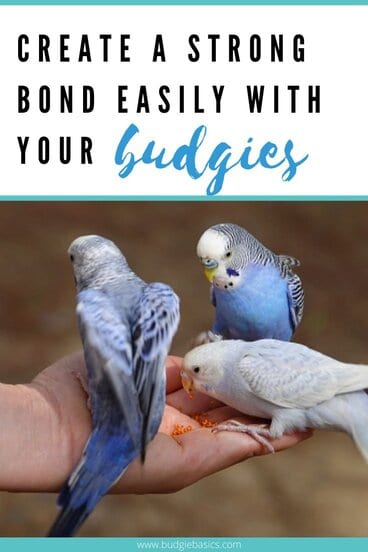

Budgerigars are emotional and highly intelligent little creatures, and with a gorgeous splash of colour you really do have everything you could want or need in a pet.
When you decide to get a budgie as a pet, you’re going to want to bond with them. If you aren’t looking to enjoy interaction with your bird then you should rather consider getting yourself something that does not need any attention – like a book.
Science has not proven is birds actually have emotions, or can feel the emotion of love, but bird owners will tell you differently.
Once you have established that bond of trust, acceptance and friendliness with your budgie, the amount of time and effort you put into your human-bird relationship will only strengthen your bond. Your budgie will in time, accept you as part of its flock and after that you will be able to teach it tricks. This mental stimulation is exciting for them and they are in general, fast learners and they will love it that you are playing with them.
Budgie bonding and the bonding area
Bonding with your budgie is purposeful and requires you to actively take time out of your day to dedicate to your bird.
Bonding does not mean that you leave it in its cage all day and give it a little ‘hello’ when you walk into the room.
Bonding takes time and patience. Some budgies will bond with their human faster than others. Some even seem to develop a sincere attachment and they would rather be perched on your shoulder and spending all of their time with you.
It’s almost as if they imprint with their human. It’s really quite incredible.
When you are purposefully bonding with your budgie, it is often a good idea to move to a different room if possible. Your budgie’s cage is their safe space so if they are feeling anxious, they will simply go back to their cage. If their cage isn’t in the room then they will retreat to you for comfort.
How to Tame Your Budgie and Get It to Trust You

How to Begin if You Have a Very Nervous Bird
If you have a very nervous budgie, possibly a rescue bird, it will take a little bit more work and a lot more patience to build up that human–bird trust and to bond with your bird.
During the early days, approach your budgie slowly from either the front or the side and just stay seated on a chair next to its cage. Talk to your bird calmly and let it get used to your presence and your voice. Birds are intelligent and your budgies will pick up on your words, your tone and your energy.
Be constant in doing this and in no time your bird will warm up to you and then you can start to open the cage and soon you’ll have your bird with you for longer periods of the day.
Movement and Sound
Firstly, remember the size difference. Your budgie is small, and in comparison you are large. This can be quite intimidating especially because in the wild, certain animals puff up and try to act larger than what they are as a scare tactic or defence mechanism. When you are going into your bonding session with your bird, keep your movements smooth and slow and keep your voice lower and calm and inviting so that you do not startle them.
If they are scared they will retreat, however if you are talking calmly, they will start to investigate you with curiosity.
Use Their Favourite Treat
There is no harm in a little bribery when trying to bond with your bird.
You should offer it small amounts of a healthy treat that will teach your bird that you are friendly, your provide tasty snacks and that your bird will learn to trust you.
If you are going to use millet as your treat, don’t give the entire strand to your bird. Break off small pieces and give it to your bird slowly.
Another useful tip when using treats in your bonding session, is to put the food in your hand and offer it to your budgie.
Treats that you can use for taming and bonding sessions include
| Millet, Chia seeds, Cooked egg, Mash | |
| Fruits | strawberries, bananas, blueberries, raspberries, pineapple |
| Vegetables | broccoli, carrot, spinach, peas, cabbage, pumpkin |
You will quickly find out what your bird’s favourite snack is.
If you put the food in a bowl on the cage of the floor, your bird could get nervous as it will be in a very vulnerable position while eating. In the wild, birds are more open to predator attacks when on the ground and this survival instinct is engrained in them.
Rather offer the treats from your hand. Let them stay on their perch while eating from your hand and when they are more comfortable let them sit on your hand eat directly from there. You will surely move up their proverbial ladder from bird owner, to treat giver.
Socialising and Playing With Your Budgie


Because these little birds are so intelligent, they need to be kept entertained or stimulated. Once they have bonded with you they are going to want to spend time with you and play games.
Offer them toys inside their cage but leave the door open to allow them to explore inside the cage and outside.
You can also play music for them – some birds will bop their heads, some will dance to certain beats and some might even start to whistle repetitive tunes.
Do not just leave your bird permanently sitting in its cage. That is not a great life for these animals. By bonding with your pet budgie you will provide it with safety and friendship, and it will trust you and feel comfortable around you. That is the goal.
5 ways you can tell that your budgie has bonded with you
Most times you will know when your budgie has bonded with you, but incase you don’t know, here are five tell-tale signals so you will know for sure.
Making noises
If your budgie likes you, you can be sure that it’s not going to keep quiet. However, the great thing is that they are not really loud birds.
Talking and whistling
Budgies can talk albeit not all of them so have patience but don’t be too disappointed if your bird isn’t one for words.
It is possible to teach your budgie to talk however if you say certain words often, it could just pick them up and start saying them.
Your budgie will show you that it likes you but talking to you when you are in the room.Once your budgie can talk, you can progress on to the whistling lessons. Again, you will know that you budgie likes you as it will be whistling when you are around.
Singing
When your bird is comfortable with you, it will twitter, chirp and sing to you when you are in the room.
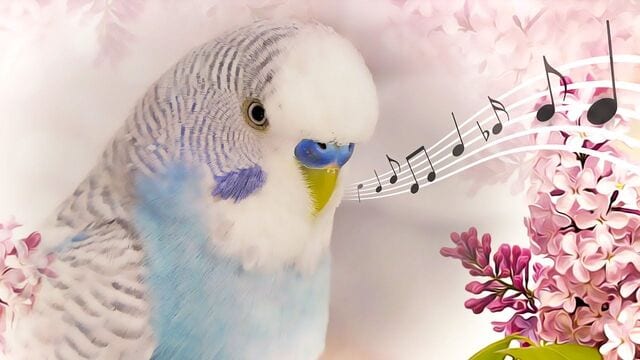
Purring
If you listen closely to a happy budgie, you might hear it purring. Budgies can purr, and just like a cat, when they do this it means that they like you and they are happy.
Body movements
You will know when your budgie has bonded with you through a variety of its movements. One simple way is when you notice that your budgie is in full relaxed-mode when you are around.
However there are a few other movements that it can make to show you that it likes and trusts you.
- Like a dog, a budgie can wag its tail in happiness when you are around.
- Another way to show you is through flapping their wings while remaining motionless on a perch.
- It might dip its head showing you that it wants a scratch. Note though that budgies do not like to be petted on their back, wings or tail.
- Your bird might hang upside down which is a very vulnerable position for it, but if you see your pet doing this, you can know for sure that it trusts you and is fully content with you.
Various forms of touch your budgie will give you
Body language is a huge thing, especially in the animal kingdom. Watch for the actions and forms of touch your bird gives you to know that it likes you.
When on your shoulder, your budgie could nuzzle into your chin or neck, showing you that it likes you. While there it could also take time to groom you and play with you or your clothing.
Your budgie might play with you by biting softly with its beak – this is what they do to one another when they are playing.
The best sign is when a budgie regurgitates its food. Then you know you’ve got a bird for life!
How often and when should you handle your budgie?
When you are working on dedicated bonding sessions with your budgie, or taming sessions, you should block off two periods per day with no distractions, of 15 minutes each.
The best time of the day to do this, and the best times to include treats in your bonding sessions, is first thing in the morning before you have give them fresh food as they would have gone the entire night without eating, or later before bedtime as they would have settled down and not eaten for a while.
Doing this is not difficult and if you are consistent in doing this twice a day it will take you approximately two weeks to have a tame budgie who would have bonded with you during this time.
How do you know when your budgie needs more attention
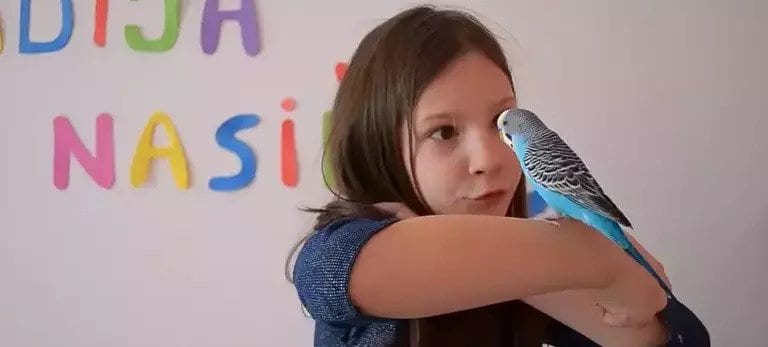
Cuddling with your budgie
As babies, kittens and puppies are raised by their mothers, constantly being licked and cleaned and carried around, and sleeping on top of their brothers and sisters.
Budgies are not like this. Once they hatch from their egg they are left on the bottom of the nesting box and are not cuddled and swaddled like other animals.
Doing these things will cause your budgie to stop trusting you
It takes consistency, time, work, patience and love to tame and bond with your budgie. Once this is established the last thing you want to do is break this trust.
Here are three common mistakes that you should avoid doing and what you can do instead, if you don’t want to lose your budgies trust.
1. Claw cutting
The fact that your budgie has to be restricted (wings held against its body) so that it does not move around while getting it claws cut will lead your budgie to distrust you.
Instead, only use perches made from natural materials that will naturally file down its claws.
2. Holding your budgie
Holding your budgie in your hand and restraining his feathers against his body will cause it to stop trusting you.
Rather leave them on their perch and teach them how to ‘step up’.
3. Trying to catch it
If your hand is inside your bird’s cage and chasing it around into every corner to catch it, you are going to put huge stresses onto your bird.
Again, rather teach them how to ‘step up’ and you will find that they will come to you willingly. Also ensure that if you are needing to catch it to take it to an avian vet for example, prepare and ensure that you have plenty of time and don’t end up being hurried or stressed. If you do lose your budgie’s trust, you are going to need to put in some work to regain it.
Sit near his cage and talk to him, or even read a magazine or a book out loud. Do this for 15 minutes three to four times a day and after three or four days, try putting your hand near to the cage or near the door, but not inside, and your bird will learn that your hand is safe and that you do not want to hurt it.
After another three to four more days you can slowly put your hand inside the cage, while talking quietly and calmly to your budgie. It will learn that your hand is not there to cause harm and after doing this for approximately two weeks, you can begin the bonding and taming sessions again
